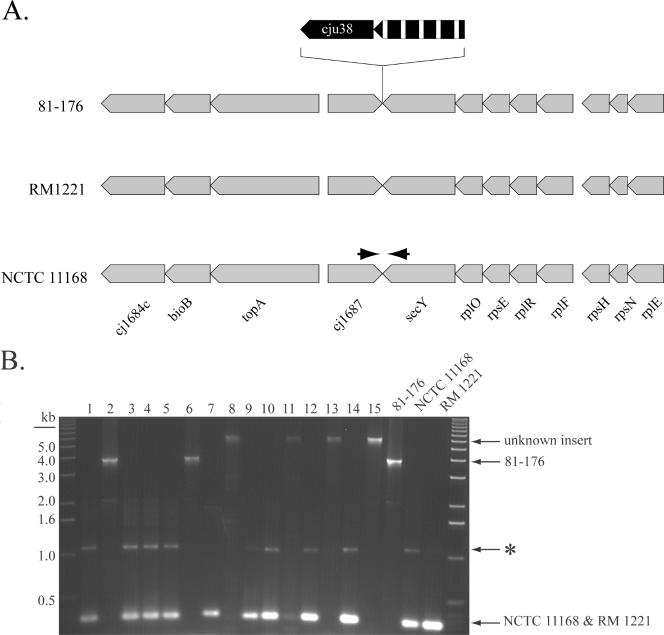FIG. 6.
Identification of an integration hot spot in the C. jejuni genome. (A) C. jejuni 81-176 exhibits an insertion of genetic material between homologous ORFs Cj1687 and secY (NCTC 11168 nomenclature) not seen in sequenced reference strains NCTC 11168 and RM1221. The 3.5-kb insert contains a gene encoding a peptidase (cju38) and a pseudogene of a putative permease of the major facilitator superfamily (hatched arrow). (B) PCR amplification of this region with primers complementary to sequences within Cj1687 and secY yielded fragments of various sizes, an indication of the presence of novel genetic material in this region (see text for more details). The gel shows fragments amplified from 15 different clinical isolates. Amplification of DNAs from isolates 2 and 6 yielded a band similar in size to that of C. jejuni 81-176, while isolates 1, 3, 4, 5, 7, 9, 10, 12, and 14 yielded a band similar in size to that of C. jejuni NCTC 11168 and RM1221, indicating the absence of inserted genetic material in these strains. Amplification from isolates 8, 11, 13, and 15 yielded a band of a size different from those of any of the sequenced strains, suggesting the presence of novel genetic material (see text for more details). *, nonspecific PCR product. The strain numbers correspond to those in Fig. 5.

